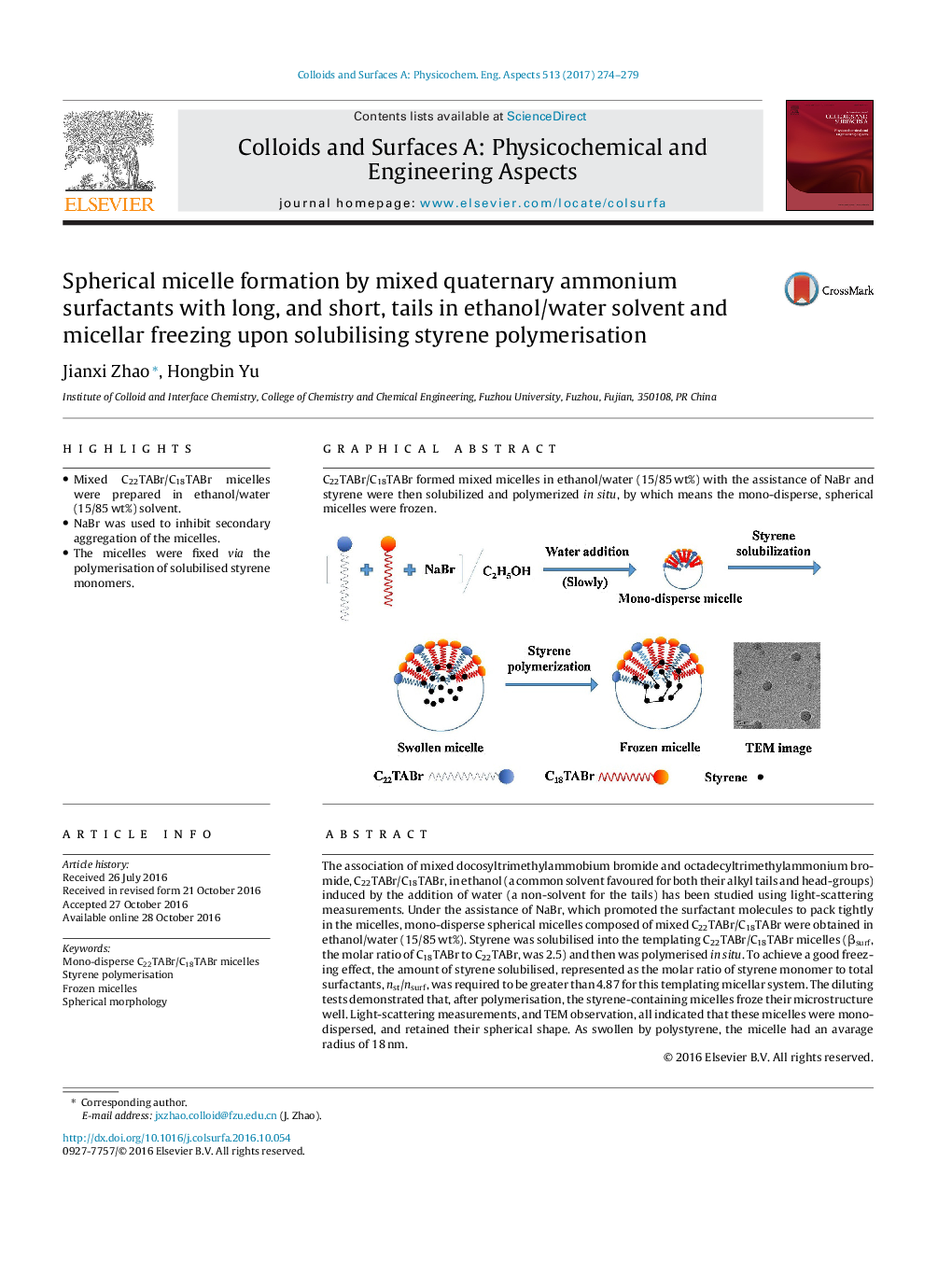| Article ID | Journal | Published Year | Pages | File Type |
|---|---|---|---|---|
| 4982558 | Colloids and Surfaces A: Physicochemical and Engineering Aspects | 2017 | 6 Pages |
â¢Mixed C22TABr/C18TABr micelles were prepared in ethanol/water (15/85 wt%) solvent.â¢NaBr was used to inhibit secondary aggregation of the micelles.â¢The micelles were fixed via the polymerisation of solubilised styrene monomers.
The association of mixed docosyltrimethylammobium bromide and octadecyltrimethylammonium bromide, C22TABr/C18TABr, in ethanol (a common solvent favoured for both their alkyl tails and head-groups) induced by the addition of water (a non-solvent for the tails) has been studied using light-scattering measurements. Under the assistance of NaBr, which promoted the surfactant molecules to pack tightly in the micelles, mono-disperse spherical micelles composed of mixed C22TABr/C18TABr were obtained in ethanol/water (15/85 wt%). Styrene was solubilised into the templating C22TABr/C18TABr micelles (βsurf, the molar ratio of C18TABr to C22TABr, was 2.5) and then was polymerised in situ. To achieve a good freezing effect, the amount of styrene solubilised, represented as the molar ratio of styrene monomer to total surfactants, nst/nsurf, was required to be greater than 4.87 for this templating micellar system. The diluting tests demonstrated that, after polymerisation, the styrene-containing micelles froze their microstructure well. Light-scattering measurements, and TEM observation, all indicated that these micelles were mono-dispersed, and retained their spherical shape. As swollen by polystyrene, the micelle had an avarage radius of 18 nm.
Graphical abstractC22TABr/C18TABr formed mixed micelles in ethanol/water (15/85Â wt%) with the assistance of NaBr and styrene were then solubilized and polymerized in situ, by which means the mono-disperse, spherical micelles were frozen.Download high-res image (231KB)Download full-size image
